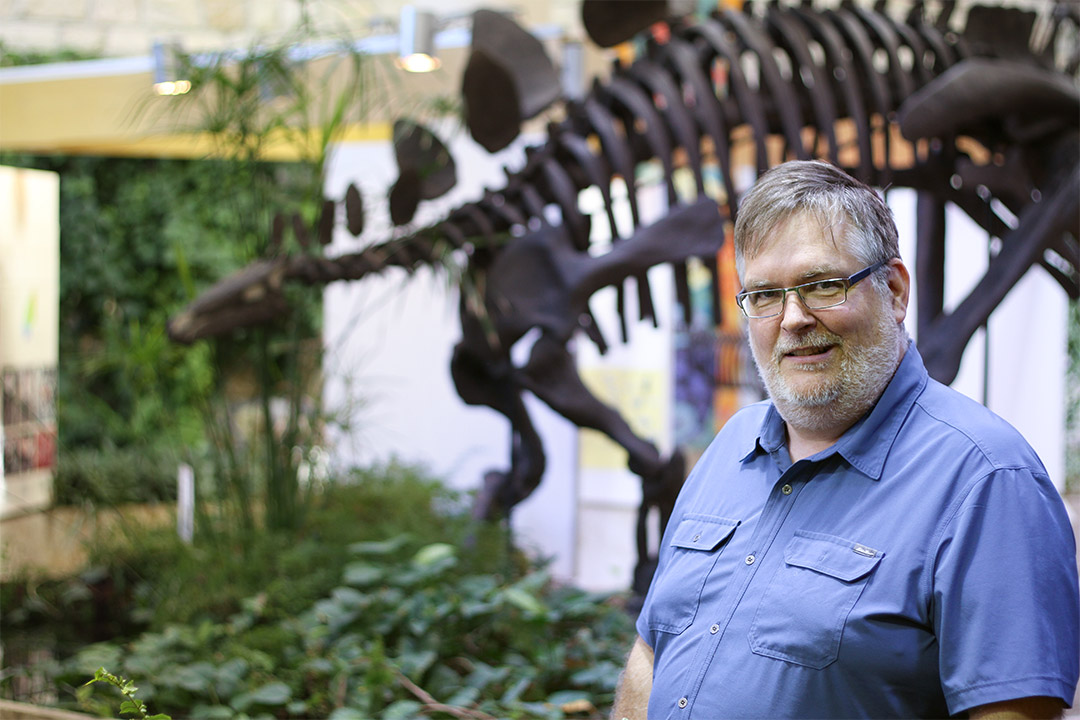
From prehistoric poop to dino skeletons
Forget for a moment the woolly mammoth tusks, dinosaur skeletons and other prehistoric discoveries that easily garner attention in the world of paleontology.
By HenryTye GlazebrookIn Saskatchewan, one of the most exciting fossils that’s been unearthed is a piece of coprolite slightly larger than a foot in length.
Or, to put it slightly less eloquently, one big pile of dino dung.
“They’re pretty sure it’s from a Tyrannosaurus rex,” said Michael Cuggy, senior lab co-ordinator and sessional lecturer with the University of Saskatchewan Department of Geological Sciences. “You have to be a certain size of animal to make a certain size dung. You know it’s a carnivore because it has bones inside of it, and then by process of elimination it would have to have been a T. rex.”
That lump of dinosaur droppings is the first ever discovered that researchers believe to have come from a Tyrannosaurus rex, excavated in the quiet, quaint town of Eastend, Sask., where U of S faculty and students have worked on dig sites. Located just north of the Canada-U.S. border, the hamlet has garnered a reputation over the years as Saskatchewan’s foremost site for paleontologists, both professional and homegrown, to take their tools and get digging.
Cuggy said the reason for Eastend’s bounty of bones lies in its unique geology. While much of Saskatchewan’s land has been laid flat by past glacial movementits colossal weight pushing down fossils over untold years of crushing advancement and recession and leaving behind layer upon layer of soil overtop—the province’s southernmost cities remain comparatively hilly and bares rocky exposures that are ripe for excavation.
“There probably are more fossils everywhere, but Eastend is by the edge of the Cypress Hills so it’s been pushed up and this exposes rock,” he said. “Other areas are too flat, and even the rivers are fairly gentle cuts. If you don’t have rock exposed, you can’t really find stuff.”
The region is perhaps most famously known for Scotty the T. rex, named after the bottle of scotch her founders shared in celebration of their astonishing find. The gargantuan beast was discovered on Aug. 16, 1991, when a classroom from Eastend joined a team of paleontologists on an educational dig just beyond the town’s limits.
“Apparently the high school principal found some bones which they then excavated a few years later,” Cuggy said. “As it turns out, it was the most massive, largest T. rex that’s ever been found in the world.”
Scotty is just one in a lengthy list of creatures from a land before time that have been found in Saskatchewan, including many brontotheres—large, rhinoceros-like mammals with multiple bumps and horns protruding from their heads—and a six-metre crocodile skeleton named Big Bert, unearthed in Carrot River.
Saskatchewan’s history with paleontology stretches back just over a century and a half, when researchers from Eastern Canada began scouring the west for fossils and other ancient artifacts.
In those days, and into the modern era, the province gained a reputation as a little sister of sorts to Alberta and its abundant deposits, where even the entire city of Drumheller was built upon a legacy of dinosaurs. Yet still, Saskatchewan was not without its merit.
“The southern area has Cretaceous rocks, so it has lots of T. rex and Triceratops that have been found, basically from the Alberta border right across through the Grasslands National Park area,” Cuggy said.
It can be easy to get caught up in the colossal skeletons that lay beneath our feet, imagining a prehistoric time when the animals they belonged to roamed freely in a world largely unrecognizable to the one we now inhabit. But Cuggy believes there are many important reasons to study paleontology beyond the innate sense of wonder.
“Understanding what’s going on with living things now and how changing environments and climates and other events in the future could affect life, the only way to have a hope of doing that is to see how changes happened in the past,” Cuggy said. “You have to study the past animals and plants that were on Earth to really comprehend this.
“It’s also just fun.”

